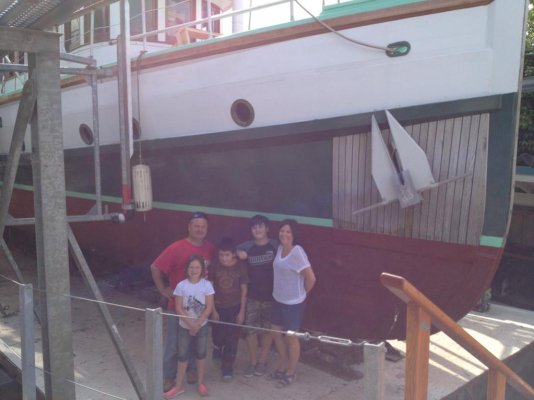Marin,,
Sometime I reaaly do wonder
This is on the Rocna website
Quote
Pete, together with Jo and their son Craig, sailed Kiwi Roa from England to New Zealand during the period 1994 – 1998. Although extremely well set-up, Kiwi Roa experienced frequent problems when anchoring. Soft mud areas such as the English East Coast, the Chesapeake, and the Delaware Bay presented particular problems.
unquote
They not only encountered soft mud many, many times it was such a problem and stuck in their memories sufficient that it deserved a special mention. Its not even as if the geographical areas are small - but it appears now to have fallen outside the safe design perameters of the anchor.
Now, to add to the problems these quotes appeared on another forum but you can check the link.
quote
http://www.morganscloud.com/2011/11/...spade-anchors/
Author: Don Joyce
Comment:
We have a 100 kg Rocna on our catamaran and have experienced dragging on two occasions: Both involve being set directly over the anchor by a thunderstorm related sudden wind shift, while being anchored in very thick mud. Apparently the anchor tripped and wouldn't reset because the center of balance was shifted back by the hoop-trapped mud. On both occasions, we could only reset the anchor after hauling it up and clearing all the mud off with our boat hook. Listening to the windlass as the anchor was being hauled convinced me that the mud and anchor together were on the order of 200 kg....yet we "sailed" through the anchorage…
Here is an additional comment received today:
Author: Don Joyce
Comment:
To be fair, we were on short scope around 4:1 to 5:1 due to limited swinging room. We usually have what late comers to an anchorage call "excessive" scope of at least 10:1. The excessive scope held us firm on the Rocna in Maine during Irene when several of the complainers around us dragged.
I did write to Rocna to suggest they need more weight in the tip. I will add some weight myself when we get the anchor galvanized.
A response to this comment:
http://www.morganscloud.com/2011/11/...spade-anchors/
Author: John
Comment:
Hi Don,
Thanks very much for coming up with that vital information. We are hearing of an increasing, albeit still small, number of these incidences with the Rocna. It's particularly disturbing that this happened with such a large anchor.
I think this danger is something that every Rocna owner needs to be aware of, so thanks again.
See all comments on this post here:
http://www.morganscloud.com/2011/11/...hors/#comments
unquote





